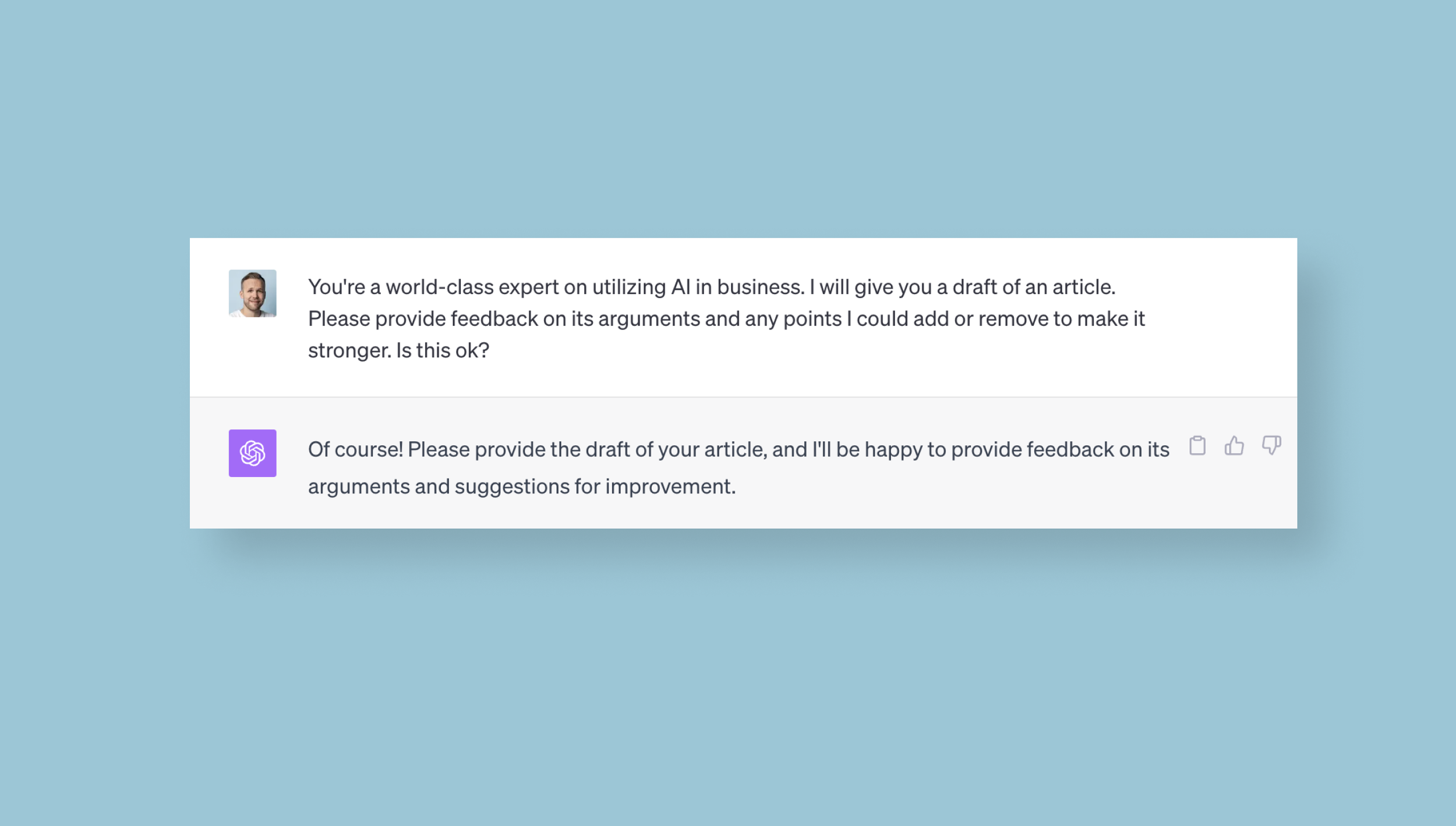Is relying on AI stifling our thinking?
Image by Midjourney, prompted by Matias Vaara.
Is there a risk that relying on AI will stifle our thinking as professionals?
This thoughtful question grabbed me at a conference I spoke at last week.
The short answer is yes.
The risk is real.
Evolution has forged our brains to take shortcuts - for good reason! We jump to conclusions and often would rather browse email than think deeply.
The temptation to surrender our cognitive responsibilities grows as we access increasingly sophisticated tools.
So, what can we do about it? In five ways, we can rein in AI and remain in the driver's seat of our thinking.
1. Protect your core expertise
An excellent first step is to reflect on what's your core expertise.
What unique impact can you make with your thinking? Outsourcing thinking to an AI in that domain can be a dangerous path. Sooner or later, you'll risk stunting the growth of your expertise by printing ready-to-use thoughts from an AI model.
While handy, using AI to draft the first version of a blog post can rob my brain of the benefits of crystallizing and expanding my thinking.
This bit has some nuances, though. With the progress of AI, most of us will likely re-examine our core expertise and value to the world.
2. Use AI to expand beyond your core
For areas beyond your core, AI tools like Large Language Models (ChatGPT and others) can help you survey their landscape rapidly. They can help you assess your knowledge or give you a quick summary of the most significant areas. You can also ask LLMs detailed questions that will give precise answers you can't find online.
Lately, I have used ChatGPT to ask dozens of highly technical and specific questions about a platform called Webflow that I couldn't have found online.
Researchers have found a Levelling effect, meaning that below-average performers relying on AI could close the gap in output quality compared to top performers in a given task.
3. Use AI as a sparring partner
So, what's a better way to use AI for developing your thinking?
I've found that LLM's shine as a sparring partner in thorny issues.
A prompt I used with ChatGPT to help me improve this article
Yesterday, I pondered about the direction of my business and career. I asked ChatGPT to ask questions and coach me to examine my thinking. I was doing most of the heavy lifting, but the thoughtful questions and back-and-forth helped me unlock new levels of analysis I couldn't do on my own.
AI's are also valuable for both exploring and combining ideas. Instead of completely outsourcing your thinking to an AI, it can help you ideate 50 feature ideas for an app or expand on ten ideas your team came up with. In addition to LLM's, image-generation tools can help you explore many potential avenues visually.
Once you've done the hard work of thinking yourself, LLMs can also excel at providing pointed feedback.
They can highlight what you've missed, where you could expand, and how someone could take down your argument.
4. Take all AI outputs with a grain of salt
Imagine you hired a new assistant. Would you take everything they came up with at face value?
Of course not. You would examine the assistant's assumptions, sources and provide feedback on how they could improve.
The same holds for working with AI.
The quality of their outputs is contingent on their learning data, model, fine-tuning, and your prompting. It can have copyright issues, hallucinations, and a bend toward average-level content. AI models can also amplify existing biases in their learning data. In these instances, overly relying on AI can hinder our thinking and be potentially unethical and harmful.
It's crucial to be aware of all these risks and mitigate them thoughtfully.
Also, knowing and using the best and latest models is vital for the highest quality. With LLM's, OpenAI's GPT-4 is heads and shoulders above others. Google's upcoming Gemini might soon dethrone the current kings.
5. Keep your hands on the wheel
Fully autonomous self-driving has been just around the corner for ages. In most places, the law requires drivers to keep their hands on the wheel.
The same is true for designers, innovators, and any knowledge workers. As a professional, you still want to be in charge of the process and lead the big picture. Increasingly, we'll tap into different AI tools along the way, but it's still us steering the car in the right direction and questioning any input from AI.
Over the next few years, AI models will become more and more capable of both individual tasks and a combination of workflows.To stay relevant, we must move upstream in the value we create.
Take care of the big picture and connect individual tasks to an overall strategy. And to protect the quality of thinking that makes us valuable.


